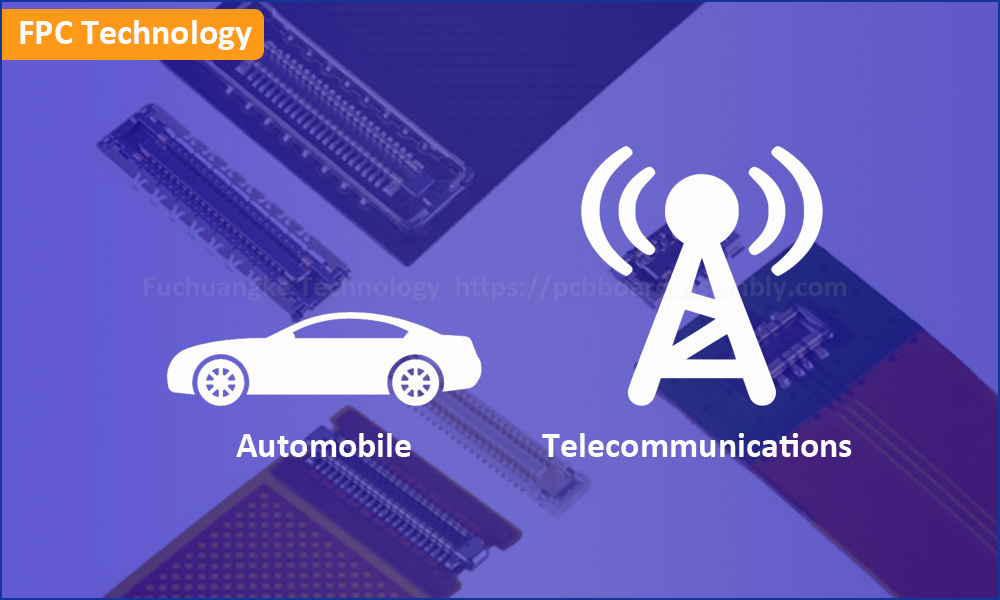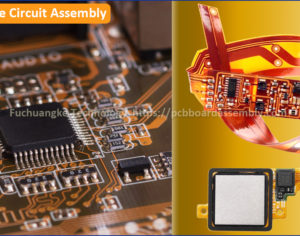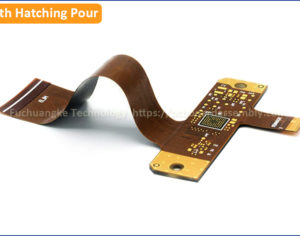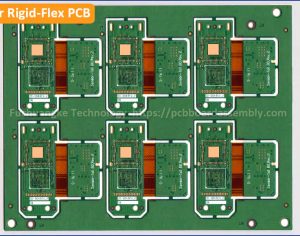Flexible Printed Circuit Technology in Automotive and Telecommunications

Flexible Printed Circuit Technology
We can find flexible printed circuits (FPCs) in almost all electronics from automobile, driving recorder (DVR), camera, smart phone to sophisticated military and avionics systems. Widely-used applications of flexible circuits are many and countless. For example, a laptop would not be possible without flexible printed circuit board (PCB) technology which allows keyboard, screen and power supply to be electronically connected in a dynamic, three-dimensional way. It’s no exaggeration to say, flexible printed circuits have entered our lives, and flexible circuit technology brings great convenience to human life.
Flexible circuit technology has a well-established history that goes back nearly one hundred years. Early patent activity highlights the fat that concepts for flexible PCB materials and FPC designs, which have only come into commercial use within the last decades, were speculated upon by inventors and others in the early 20th century. The heart and soul of flexible printed circuits are flexible film materials and thin layers of conductive copper traces. These typically constitute the base flex PCB laminate, which can be utilized to interconnect electronic devices as a reliable wiring replacement, or can have electronic components directly attached to it via soldering or conductive adhesive, to form a finished circuit board.
Flexible circuit technology provides different PCB fabrication methods under totally different flexible base materials. Any assessment of the technology of flex circuits quickly identifies a whole range of benefits that complement and surpass the rigid PCB capabilities. For many, the technology and flexible circuits’ wide applications may be new and the view of flex circuit may be restricted to that of simple point-to-point connections, as a replacement for traditional electrical wire for example. This is currently far from the case and the promise of flexible circuitry is highly significant. With new applications and new materials continually being designed and developed, the technology promises to revolutionize many aspects of electronic circuit design.
Two Flexible Circuit Applications
There are currently two basic use categories of flexible circuit applications, flex-to-install and dynamic operation. As the names imply, flex-to-install applications, which represent the majority of use, are those that require the circuit to be formable at the time of assembly, to fit into a product with maximum ease.
Dynamic applications are those that make full use of the circuit’s dynamic capabilities, often resulting in applications that require many thousands of flexing operations throughout the circuit’s lifetime. Examples of such applications include typewriters and printers, where the requirement is for a connection between a moving element and its control system.
Within the consumer arena, the major application currently demanding the greatest dynamic flexing applications is in the area of computer disk drives, where the read-write head tracks along the surface of the hard disk. This is highly demanding application requires billions of flexing operations of the products life and so requires a highly reliable interconnect between the head and its control module.
Advanced Flexible Circuit & Rigid-Flex PCB Capabilities | Fuchuangke Technology
Flexible PCB Quote Rigid-Flex PCB Quote
Automotive
The automotive instrument-cluster market was one of the original, flex-to-install, volume drivers for the flexible circuit market. Flexible circuits are used to deliver bother power and connectivity to instruments mounted on vehicle dashboards, including lighting, power, sensor connection and touch buttons.
The major growth in in-vehicle electronics is a significant area of opportunity for FPC technology. It’s said that 30% of a car’s price is accounted for by its electronic equipment, notably antilock brakes, air bags, electric windows and power steering. The growth in driver safety and maintenance features such as ABS and circuitry in increasingly new and more demanding environments. Under-bonnet applications are on the increase, where circuits are exposed to temperature extremes, chemical contaminants and dirt and an environment sensitive to, and generating a lot of, electrical interference.
The scope of the potential for flexible circuits within the automotive arena can not be underplayed, and the technology is seen as key to reducing the complexity of modern vehicle assembly, reducing assembly errors and meeting increasing demands for low weight, low cost and reliable connectivity. These demands are set to escalate as the vehicles are forcast to contain an increasing array of electronic automotive systems.
Telecommunications
Telephone handsets have utilized flex-to-install FPC technology for many years, the principal advantage being that FPCs are well suited to the cured design of handsets and offer a low-cost, reliable circuit technology.
Flexible circuits can be found in a whole range of telecommunications equipment from low-cost fax machines, where they afford significant space saving and, through the use of multilayer flexible PCB, a high degree of connectivity.
Within mobile phones, flexible circuits have been employed to solve many of the technical problems that have enabled the technology to keep pace with changing customer and designer demands. Initial applications of flexible circuits in mobile phones were in touch-pad type applications. At the time, button keypads were being replaced with backlit pliable dome buttons, and flex circuits combining the attractions of low cost and transparent substrate were employed to provide electrical connectivity.
Flexible circuitry can be found in the rechargeable battery packs that power many phones, where it proved an effective way to regulate discharge in nickel metal hydride and lithium ion batteries. In this regard, not only did flex circuits simplify battery-pack assembly, but they also reduced cost and gave designers an easy way to locate fuses, typically on the flex circuitry itself.
As mobile phone screens and LCDs have become more complex, showing an ever-greater amount of information, the increasing demands for more inputs and outputs has led to the application of flex circuits to link screens to their driver chips and power supply. Again, designers have saved space, improved reliability and lowered flexible circuit assembly complexity by locating components directly onto the flex substrate. Materials of choice revolve around polyimide due to it strength and ability to accept soldered components.
A further widespread use of flex circuits is for internal and external antennas for handsets. Low-cost flex has been found to be an innovative technology for their production in the face of the tough challenge of improving transmission range while reducing exposure of the user to stray radiation.
Various grades of low-cost laminates are used for antenna construction, and their flexible and lightweight construction make them ideal for flex-to-fit placement within the phone housing. Flexible circuit tracks and circuit signal effectiveness while keeping radiation away from the user. In external applications the circuits are often coated with a protective rubber or plastic material, to produce a desired antenna shape.
Overall, flexible circuits have evolved to meet many of the major challenges faced by the functionality and miniaturization requirements experienced by the mobile phone industry. Whilst the use of flex has become advantageous for some aspects of phone industry, it is considered essential in delivering the functionality and durability required of both phone, PDA and laptop designs that incorporate hinged flip lids. Previously, only RA copper flex circuits were considered capable of meeting the demands for many thousands of flexing operations over the lifetimes of such products. However, the developments in adhesiveless laminates with the same level of flexing and durability have been eroding Ras stronghold in the market.


